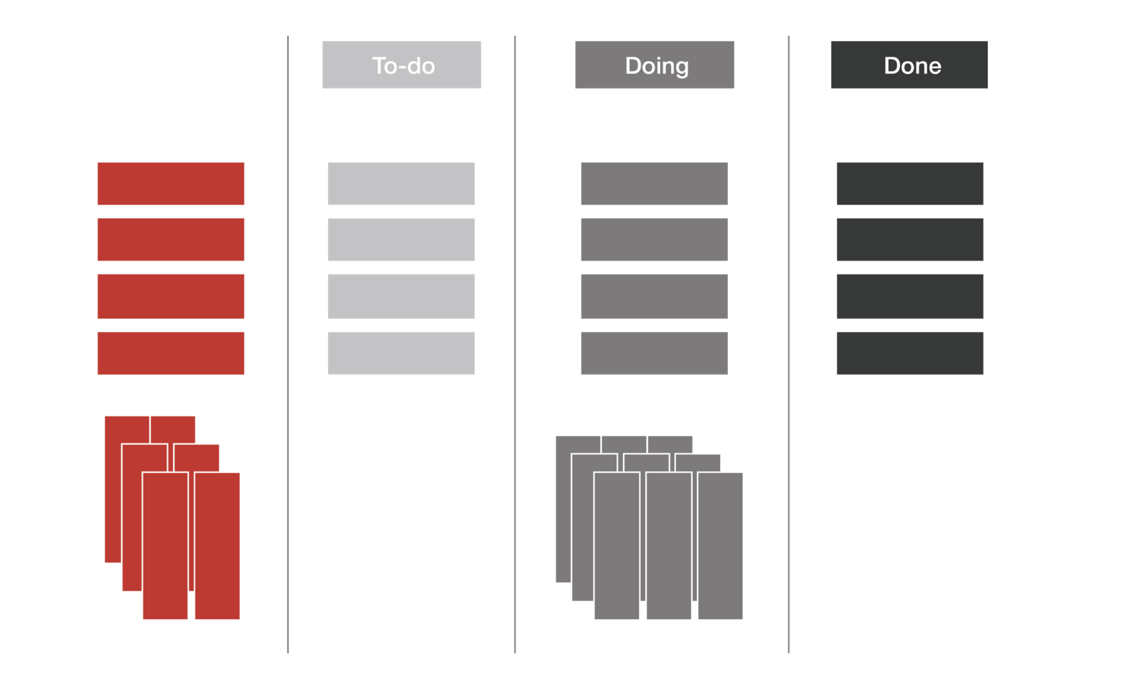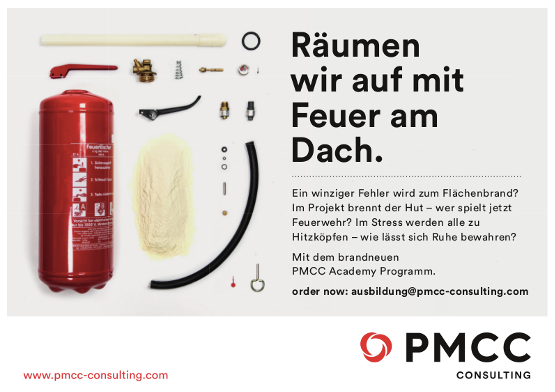Kanban is a working method that evolved from the Toyota production system when Toyota introduced just-in-time production in the 1940s to better meet customer demands and reduce storage costs.
The term Kanban comes from Japanese and consists of the words "Kan" for visualization and "Ban" for card, document or board. The best-known Kanban element is probably the Kanban board: In its simplest form, it consists of the 3 columns "To-do", "Doing" and "Done" representing the workflow (see figure 1). If the Kanban board is used correctly, it serves to quickly forward information to adjacent production areas or development teams and thus represents an important information node that visualizes bottlenecks or difficulties in the workflow.
If the Kanban board is used correctly, it serves to quickly forward information to adjacent production areas or development teams and thus represents an important information node that makes bottlenecks or difficulties in the workflow visible.
But Kanban is more than the described Kanban board. Originally conceived as a method for decentralized, flexible control of production processes, Kanban has established itself as a method for agile process management with the goal of making workflows more flexible, optimizing the workflow and ultimately increasing the quality and productivity of the end product. The Kanban system is based on the following 4 basic principles:
-
Start with what you are doing now: Kanban can be placed over any existing workflow or process. So, it is easy to implement in every company, because no comprehensive changes are necessary to get started.
-
Strive for incremental, evolutionary changes: Kanban with minimal resistance contributes to continuous, incremental and evolutionary changes in the current process by avoiding major changes that cause anxiety or insecurity and thus meet resistance.
-
Consider current processes, roles and responsibilities: Kanban considers the possible value of existing processes, roles, responsibilities and reflects on keeping them, since changes are as little prescribed as forbidden. Rather, incremental changes that do not trigger fears hindering progress are encouraged.
-
Facilitate leadership at all levels: This is the latest Kanban principle. It says that improvement can only work if employees at all levels are actively committed to improving processes. Not only the management level, but everyone involved must indeed accept and implement continuous improvement (Kaizen), so that optimal performance is also established in the team, department and company-wide.
The aim of Kanban is to generate a smooth workflow.
But how is Kanban used now? The following 6 steps will help you with your first successful use of Kanban:
-
Visualization of the process: In order to make changes or optimizations, you first need to understand the current process. Visualization using the Kanban board is ideal for this. On the one hand, the process steps are visualized by columns, and, on the other hand, all work elements are visualized by Kanban cards. By moving the cards from "Requested/To-do" to "In Process/Doing" and "Completed/Done" you can easily recognize the progress and identify possible problems or bottlenecks.
-
Limitation of the current work in progress: Multitasking or repeated switching between tasks can affect the workflow, as the throughput times increase with the number of tasks started. For this reason, work-in-progress (WIP) limits are introduced in this step, i.e. the number of jobs performed simultaneously at one station is limited. A new job can only be accepted if capacity is available. This "pull system" creates a workflow and any bottlenecks become immediately apparent.
-
Workflow control: The aim of Kanban is to generate a smooth workflow. This means, on the one hand, a maximum throughput speed and, on the other hand, a throughput without significant friction losses. The ideal is a fast and smooth workflow.
-
Common view on process guidelines: In order to improve the process, it is necessary to understand it in its entirety. Here it helps to discuss the process with everybody concerned and to create a common point of view. This is the only way to achieve the necessary acceptance and commitment of everyone affected. This is the important breeding ground for supporting positive changes.
-
Get feedback: For positive changes and knowledge transfer to happen, regular exchange is also necessary. Similar to Scrum, a daily stand-up meeting can be used here. This is held before the Kanban board, and all members tell the others what they did the day before and what they do today.
-
Improve cooperation: The way to continuous improvement and sustainable change within a company is paved by a common understanding of the problems to be overcome. Teams that share a common understanding of work, workflows, processes... are more likely to suggest improvement measures that can be better supported by the group.







 Jira
Jira
 Confluence
Confluence
 SAP
SAP
 API
API





